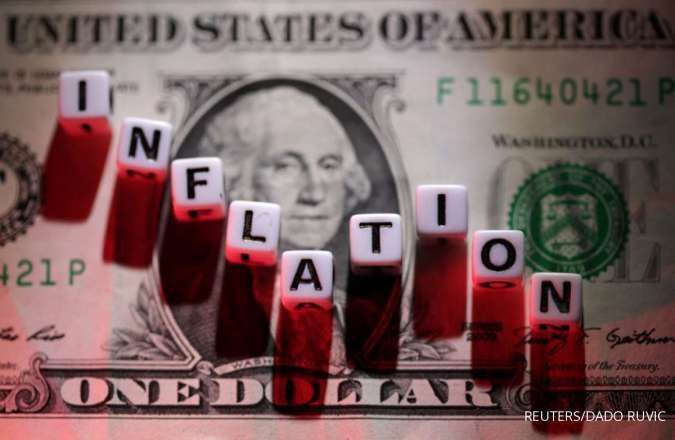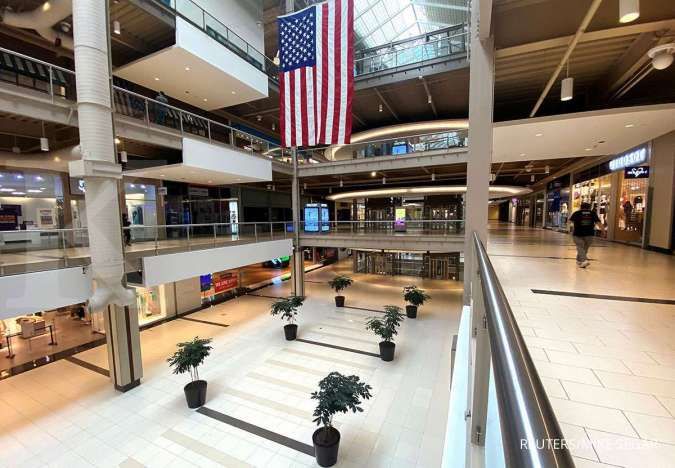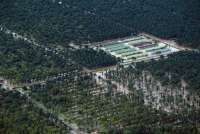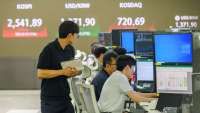INFLATION - WASHINGTON. U.S. consumer spending increased by the most in six months in July as Americans bought more goods and services, but slowing monthly inflation rates cemented expectations that the Federal Reserve would keep interest rates unchanged next month.
The report from the Commerce Department on Thursday suggested the economy gathered momentum early in the third quarter. Consumer spending is being supported by a tight labor market, with other data showing first-time applications for unemployment benefits unexpectedly falling last week.
"Demand is on fire and inflation is cooling," said Christopher Rupkey, chief economist at FWDBONDS in New York. "How long inflation can continue to come down with consumer spending this strong is an open question."
Consumer spending, which accounts for more than two-thirds of U.S. economic activity, increased 0.8% last month. Data for June was revised slightly higher to show spending rising 0.6% instead of 0.5% as previously reported. Economists had forecast spending increasing 0.7%.
When adjusted for inflation, consumer spending increased 0.6%, also the largest gain since January. The so-called real consumer spending rose 0.4% in June. Last month's solid increase put spending on a higher growth path at the start of the third quarter. Declining savings and moderating wage gains could, however, slow spending in the months ahead.
Read Also: India's Economy Grows at Fastest Pace in a Year in April-June Quarter
Spending on goods increased 0.7%, mostly reflecting products with a short life span, including pharmaceuticals, recreational items, groceries and clothing. There were also increases in outlays on recreational goods and vehicles as well as household furnishings and equipment and other long-lasting goods.
Services spending increased 0.8%, driven by portfolio management and investment advice services, housing and utilities, restaurants and healthcare.
The government reported on Wednesday that the economy grew at a 2.1% annualized rate in the second quarter with consumer spending more than offsetting the drags from trade, an inventory drawdown and persistent housing market weakness.
Since March 2022, the Fed has raised its policy rate by 525 basis points to the current 5.25%-5.50% range. Financial markets expect the U.S. central bank will leave its benchmark overnight interest rate unchanged at its Sept. 19-20 policy meeting, according to the CME Group's FedWatch Tool.
U.S. stocks opened higher. The dollar rose against a basket of currencies. U.S. Treasury yields fell.
Read Also: Thai Rice Exports Rise Nearly 12% This Year -Ministry
TIGHT LABOR MARKET
Inflation as measured by the personal consumption expenditures (PCE) price index rose 0.2% last month, matching June's gain. Food prices climbed 0.2% and energy edged up 0.1%. In the 12 months through July, the PCE price index increased 3.3% after advancing 3.0% in June.
Excluding the volatile food and energy components, the PCE price index gained 0.2%, after climbing by the same margin in the prior month. The so-called core PCE price index increased 4.2% year-on-year in July after rising 4.1% in June.
The annual PCE inflation rates were lifted by a lower base of comparison last year. The Fed tracks the PCE price indexes for its 2% inflation target.
Slowing monthly inflation is fueling optimism that the central bank is probably done hiking rates and could engineer a "soft landing." Most economists have walked back their forecasts for a recession this year.
Read Also: US Second-Quarter Economic Growth Revised Lower as Inventories Drop
Though the labor market is cooling, with job openings dropping to their lowest level in nearly 2-1/2 years in July, conditions remain tight. Employers are mostly hanging on to workers after difficulties hiring during the COVID-19 pandemic.
Initial claims for state unemployment benefits fell 4,000 to a seasonally adjusted 228,000 for the week ended Aug. 26, the Labor Department said in a separate report on Thursday. Economists had forecast 235,000 claims for the latest week.
The number of people receiving benefits after an initial week of aid, a proxy for hiring, rose 28,000 to 1.725 million during the week ending Aug. 19.
The claims data have no bearing on August's employment report, which is scheduled for release on Friday.
According to a Reuters survey of economists, nonfarm payrolls likely increased by 170,000 jobs in August after rising by 187,000 in July. The unemployment rate is forecast unchanged at 3.5%, a more than 50-year low.
/2019/04/08/650615910p.jpg)











